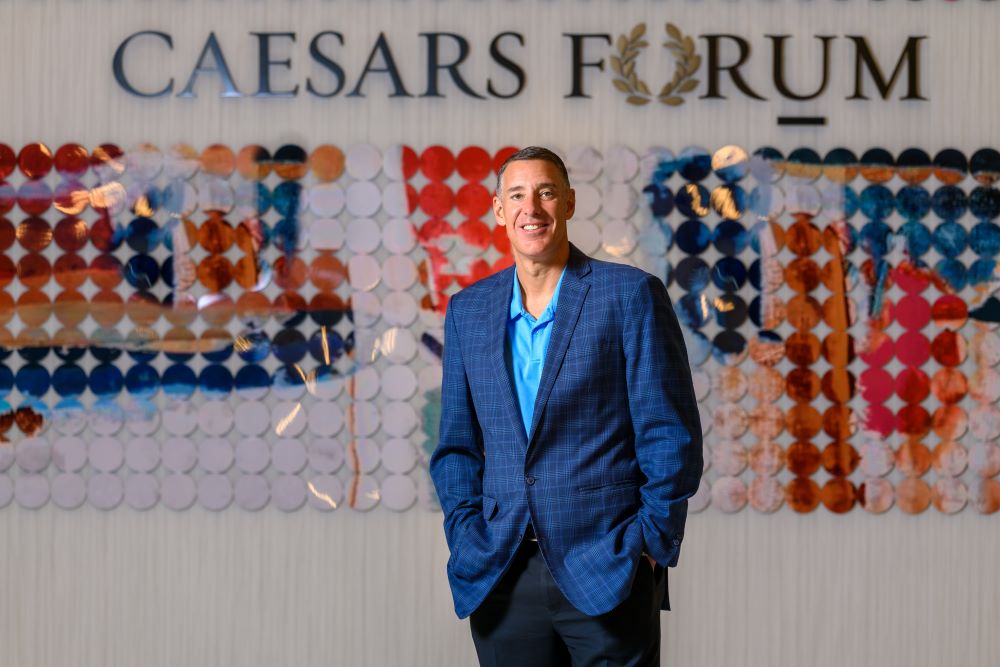The path forward is often paved by lessons learned from the past. As meetings and events industry professionals work to navigate through the pandemic and plan for the return of face-to-face meetings, we took a pause with leaders from a variety of sectors within the industry to highlight some of their biggest takeaways from the COVID-19 crisis, and how the industry can better prepare for unknown challenges in the future, especially with the recent emergence of the Delta variant.
“Whatever the odds are we would have a pandemic in any given year, the odds are the same it could happen again the next year,” noted Michael Massari, chief sales officer for Caesars Entertainment and co-chair for the Meetings Means Business Coalition. “I think it’s important that we take a deep breath and learn some lessons.”
The Importance of Advocacy
The COVID-19 pandemic triggered an unprecedented economic downturn—one that was felt especially hard by the travel industry. With no in-person gatherings taking place for a good portion of 2020, restaurants and bars closed, and flights at an all-time low, many businesses in the travel sector were struggling.

A second blow exacerbated the hardship when 501(c)(6) organizations—which include most destination marketing organizations—were left out of the first round of critical government relief. Don Welsh, president and CEO of Destinations International, recalled teaming up with Roger Dow and his team at U.S. Travel Association to advocate for much needed financial help for the industry.
“It was a full-time job for Roger and his team. We began lobbying and that’s not what we do,” Welsh said. “We are an industry that represents 10% of the global GDP, and it’s unfortunate we had to do the work that we did.”
Some of this work included writing letters and meeting with government officials.
ASAE, the membership organization for associations, played a big role in government advocacy as well. Associations, whose revenue streams largely depend on annual meetings, were greatly affected by the halt in face-to-face meetings. Many associations are also 501(c)(6) organizations and were left out of the Paycheck Protection Program (PPP).
“When you’re up against the federal government, you can’t go at it alone,” recalled Susan Robertson, president and CEO of ASAE. “So, we formed partnerships with U.S. Travel, chambers of commerce and others that we could join forces with and make our case on the hill. Now we feel associations are on the map in a way we weren’t before. We have a voice now, and we can use it.”
Robertson said for her, this experience taught her the importance of grassroots efforts, citing signed letters detailing the struggles of associations with thousands of signatures to make noise for the industry.
“There was a lot of momentum to get behind these,” she said.
Ultimately, Congress expanded the PPP to include 501(c)(6) organizations in December 2020, providing some much-needed relief.
“Had that funding not taken place, you would have seen a good number of CVBs having to shut down, reorganize or take loans,” Welsh said.
“Hopefully the lesson learned is that relevancy is the most important thing to an association,” Robertson added. “I can’t think of an association whether they did well financially or not that didn’t have their relevancy tested.”
“One of the silver linings is the relevance and awareness of destination organizations and what they do for their states and countries,” Welsh added. “When things are good, many community leaders feel these things are happening by themselves. You forget there are organizations behind the scenes making these things happen.”
Emphasizing value and relevancy has also been the mission of the Meetings Mean Business Coalition (MMBC), which was formed in 2009 following the Great Recession, with a stated purpose of showcasing the value that face-to-face meetings bring to businesses, people and communities, and the economy.
Its mission couldn’t have been more relevant in 2020, as it worked to communicate the difference between business meetings and social gatherings amid pandemic restrictions to officials at all levels of government, and also help advocate for the expansion of the PPP.
Following the experience of the past year, Massari, MMBC’s co-chair, believes that this advocacy will be imperative to the continued survival of the meetings industry.
“I think this is a real critical part of our conversation. We need to make sure our political leaders at our state, local or federal level [know that] meetings are a critical need to society,” he said. “Everything in society requires a gathering or meeting.
“The second thing we talk about a lot more often is how the airplane seat, the meal on the airplane, the front desk agent at the hotel, etc., [are part of] all of the ways the meetings and events business has suffered.”

The many jobs and revenue resulting from the meetings and hospitality industries is significant. Prior to the pandemic, the direct global impact of business events resulted in $1.5 trillion in total GDP, 26 million jobs globally and $1.7 trillion in direct spending, according to The Global Economic Significance of Business Events study, commissioned by the Events Industry Council (EIC) and conducted by Oxford Economics.
Communicating that impact continues to be a priority for Massari.
“I think it’s clear that we have more work to do. I would challenge every person in our industry to dedicate some portion of time to make sure something like this doesn’t happen again,” he said.
[Related: 4 Trends for CVBs/DMOs Post-Pandemic—And What They Mean for Planners]
Investing in the Latest Technology
Undoubtedly, one of the biggest disruptions brought by the pandemic was the need to convert in-person meetings into virtual programs—and it exposed how far behind the industry was in adopting digital strategies.
“The pandemic launched the meetings and events industry forward by 10 years, and it was needed,” said Amber Heintz, VP of operations for Bishop-McCann.

Though the learning curve was steep for many—turning to virtual solutions out of necessity—ultimately, Heintz sees long-term benefits.
“During this time, we have been able to see just how important technology can be in supporting business needs. The ability to determine which meetings are necessary to hold in person and which would save travel time is a huge advantage both from a business financial perspective and a personal time perspective,” she continued. “Investments in virtual and touchless technology should absolutely continue to be invested in, even as face-to-face meetings are returning.”
“We sort of found out how effective technology can be to provide information when a trip can’t be readily done overnight,” Welsh added, referencing both travel for site inspections and meetings. “I think it will continue to be used going forward. I do think it will continue to be augmented, but [we will] become a little less dependent on virtual as we get back to the need to physically see a convention center or hotel.”
Robertson agreed, conceding that while virtual meetings can’t replace the face-to-face experience entirely, the availability of sophisticated technology and the opportunity for online education will make virtual a constant.
“Technology has scrambled and caught up. When we first started there were digital platforms, but now there’s a really sophisticated array of platforms to give meetings and associations a lot more options than they have had before,” she said. “I think that will be with us always. That’s not going to go away…virtual and online learning will be an important part of our offering going forward.”
Relationships Are Key
While it may come as no surprise to long-time industry professionals that relationships in the meetings and events business are one of the biggest drivers of success, this truth was greatly emphasized during the pandemic.
“A trusting relationship with clients and partners can make a huge difference in the outcome of the meeting and the experience of planning along the way,” Heintz said. “I applaud the industry overall for continual knowledge and experience sharing, evolving quickly into what was needed in the moment from health protocols to technology changes, finding alternate ways to delight and bring joy to attendees, and a general positive outlook that we will get through this.”
Knowledge sharing seemed to happen on every level—between meeting planners, destination organizations and even hotel competitors.
“Our industry came together incredibly well. We worked really hard every day, side by side, trying to get ourselves through this,” Massari said. “In Las Vegas we had a bi-weekly meeting, with myself and the leaders of LVCVA, Wynn, MGM [and others].” Massari said the group shared government relations strategies and swapped ideas, among other collaborative efforts.
For ASAE, strengthening and maintaining relationships with its members helped lead the organization through its darkest moments.
“It’s really clear to me that the thing we did right was to be immediately responsive to our environment and let our members lead us…if we had been egotistical in that process and thought we had the answers, we would have been wrong,” Robertson said. “To also feel like there is a community—you can feel alone when faced with something like this pandemic. You’re struggling without your colleagues, with technology from your dining room table, you’ve got kids, all kinds of things pulling you in all kinds of directions—that was a difficult situation. But we could galvanize around the needs of our members.”
[Related: Addressing Mental Health in the Meetings Industry—And Why It’s Important]
Diversifying Revenue Streams
While the value of face-to-face meetings has been made clear during the pandemic, a time in which such meetings were not possible, it also highlighted a need to diversify revenue streams, should a future roadblock prohibit in-person interactions again—such as the current spread of the Delta variant, which has caused some large meeting cancellations in hard-hit locations.
This is especially true for associations, whose survival has long relied on annual meetings.
“When you reflect back on the year, there are so many things we learned, so many things the hard way,” Robertson said. “We have had to rethink things entirely. Some of the main revenue streams associations count on were affected by this pandemic.”
“One thing we all learn is you have to have reserves,” she added, pointing to a refocus in financial strategy. “Let’s say you depleted reserves during this point in time, it’s important to build that back up. I think that’s a top priority.”
“Do not be afraid to try new things. There is the small chance that things could go wrong, but usually a much bigger chance that it can go very well with a big reward.” —Amber Heintz
In the face of hardship, ASAE tried something new to expand its reach and attract new members.
“We actually offered our annual meeting last year for free,” Robertson noted. “We restored our registration for this year, but not at face-to-face levels. But because we did that, we engaged with people who never, ever engage with our meetings. Seventy-one percent of those people were new who attended ASAE—they had never attended before. So now, how do we continue to grow those relationships?”
Such creative thinking will help in brainstorming new ways to generate revenue when in-person meetings aren’t possible.
“Do not be afraid to try new things. There is the small chance that things could go wrong, but usually a much bigger chance that it can go very well with a big reward,” Heintz advised.
Forward Strategic Planning Is Essential
Following a tumultuous year-plus, most industry leaders can agree that forward planning for crises and safeguarding the industry is crucial to the meetings industry’s survival.
“The benefit of that is when you come out of a crisis like this, you need a plan. That’s the lesson here. You have to think through a new reality, new business model, new approach, new strategy really to help the industry recover,” Robertson said. “We were caught without a playbook.”
“A few takeaways after navigating this past year include never underestimating the power of a group of determined meeting planners, look at what is in front of you and make the best decision for the moment while keeping the future in mind,” Heintz advised. “Continue to negotiate contracts assuming the clauses will be used to ensure thorough protection, encourage your team to seek new and more efficient ways of doing business, and remember that we are a stronger industry in many ways because of the disruption.”
Though it may be easy to fall back into the rhythm of doing business like it was done pre-pandemic, Heintz encouraged fellow meeting professionals to take a look at what we have learned through this experience and use those learnings to do business better.
“It would be easy to revert back to the way things were done in 2019; however, we have learned so much. We know associates can work from anywhere and be effective. Flexibility from our clients, our partners and ourselves make for great meeting experiences,” she said. “We can suggest and learn new skills for the betterment of our client programs. “Ensuring our clients start with the goal of the meeting, instead of doing it because we always have, has been critical to ensure the right approach to take either in-person, virtual or blended,” she added. “We also learned that everyone [associates, clients and partners] crave human interaction, and that is what makes our industry so powerful.”
Silver Linings
As unfortunate and devastating as the global pandemic has been for everyone—professionally and personally—emerging from the toughest times brings with it the silver lining of lessons learned and new ideas to make the industry better than before.
“There were lessons we learned during this big disruption for the industry. Nothing is guaranteed,” Heintz said. “It is important to clearly communicate internally and with clients to ensure all angles and expectations are met in an environment with an ever-changing target. Do not be afraid to try new things.”
Read this next: 10 Negotiation Strategies as In-Person Meetings Resume







